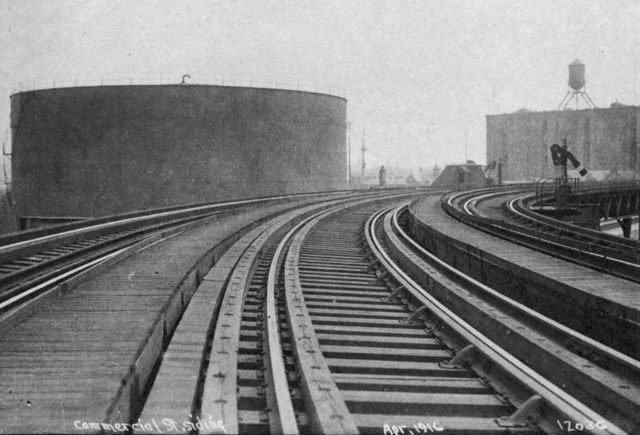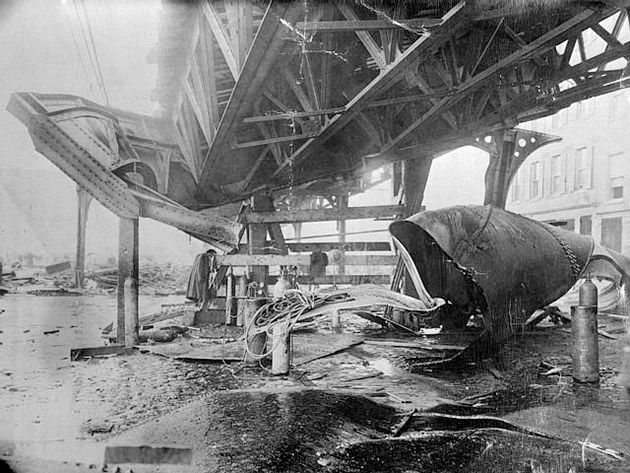by 3rdrail
Thought that I would show you some neat photos of the infamous Copps Hill Wharf, which was an important freight station for trolley freight in Boston. Freight motors from the Bay State Street Railway Company and the Boston and Worcester Street Railway Company would use the station regularly in their business. Both street railway companies were given the right to do so under a cooperative agreement at the time and operated on Boston Elevated Railway Company track. Usually, BERy installed dedicated track for the sole purpose of the freight business, as was the case here and other places such as the Fish Pier. The wharf was at 529 Commercial Street in the North End, and of course, has the dubious distinction of being the location of Purity Distilling Company's huge molasses tank which exploded in 1919 killing many persons. You have probably heard it before, I don't know if it is true, but it is claimed by some that you can still smell the odor of molasses on a hot, humid day in the area.
We see a couple of carpenters working on some sort of iron reinforced wooden structure with a two-man ban saw. Anybody have a guess what the structure is that they're working on ? In the rear are a few freight motors lined up.

Freight motors lined up for loading. Probably an early morning shot.

A different angle of freight operations taking place with motors about to be loaded.

Now, we're on the El iron on the Atlantic Avenue Division and there sitting ominously over on the left is the mollasses tank which took so many lives on that day in 1919. Note the old semaphor signal.

We see a couple of carpenters working on some sort of iron reinforced wooden structure with a two-man ban saw. Anybody have a guess what the structure is that they're working on ? In the rear are a few freight motors lined up.

Freight motors lined up for loading. Probably an early morning shot.

A different angle of freight operations taking place with motors about to be loaded.

Now, we're on the El iron on the Atlantic Avenue Division and there sitting ominously over on the left is the mollasses tank which took so many lives on that day in 1919. Note the old semaphor signal.

~Paul Joyce~
Moderator: Toy Trains, Model Railroading, Outdoor and Live Steam
Paul Joyce passed away in August, 2013. We honor his memory and his devotion at railroad.net.
Moderator: Toy Trains, Model Railroading, Outdoor and Live Steam
Paul Joyce passed away in August, 2013. We honor his memory and his devotion at railroad.net.

